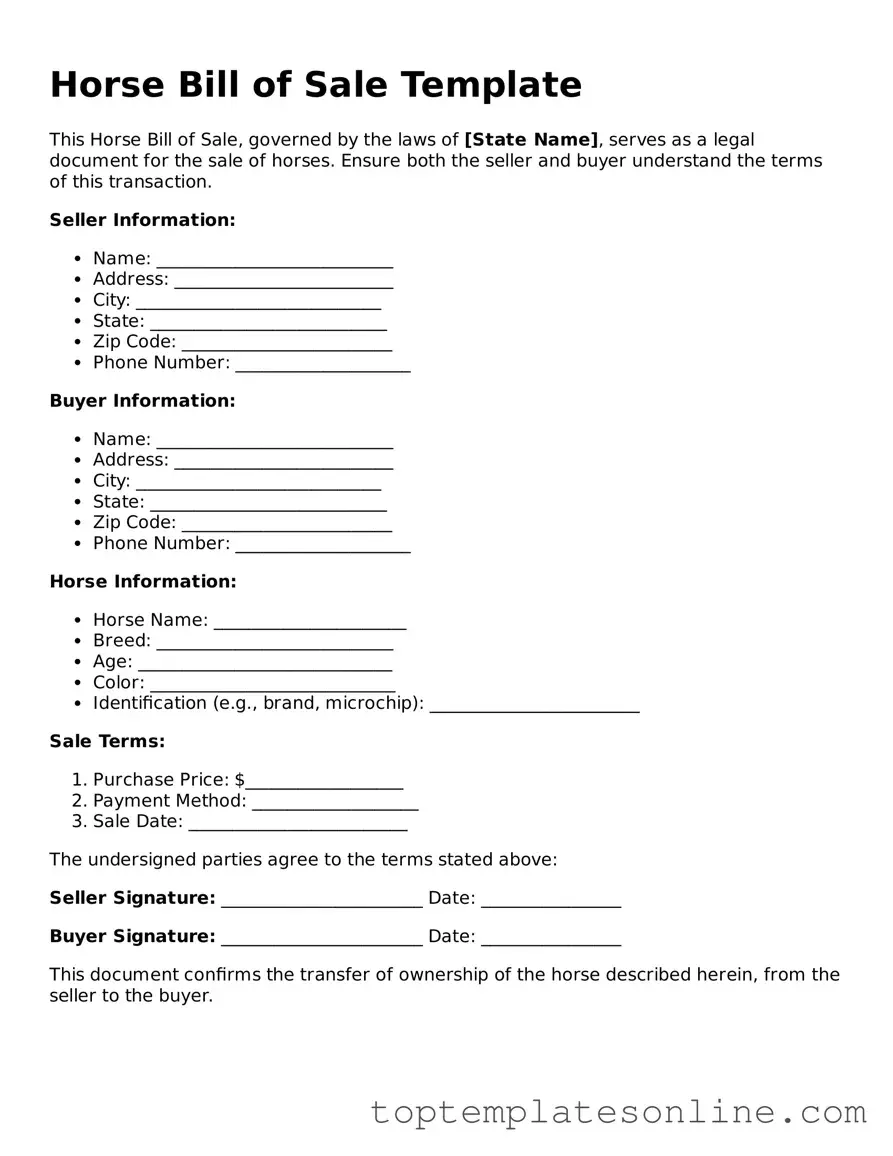Attorney-Approved Horse Bill of Sale Form
The Horse Bill of Sale form is a legal document that records the sale and transfer of ownership of a horse from one party to another. This form serves as proof of the transaction, outlining important details such as the horse's description, sale price, and the names of both the buyer and seller. Understanding this form is essential for anyone involved in equine transactions, ensuring clarity and protection for both parties.
Customize Horse Bill of Sale Here
